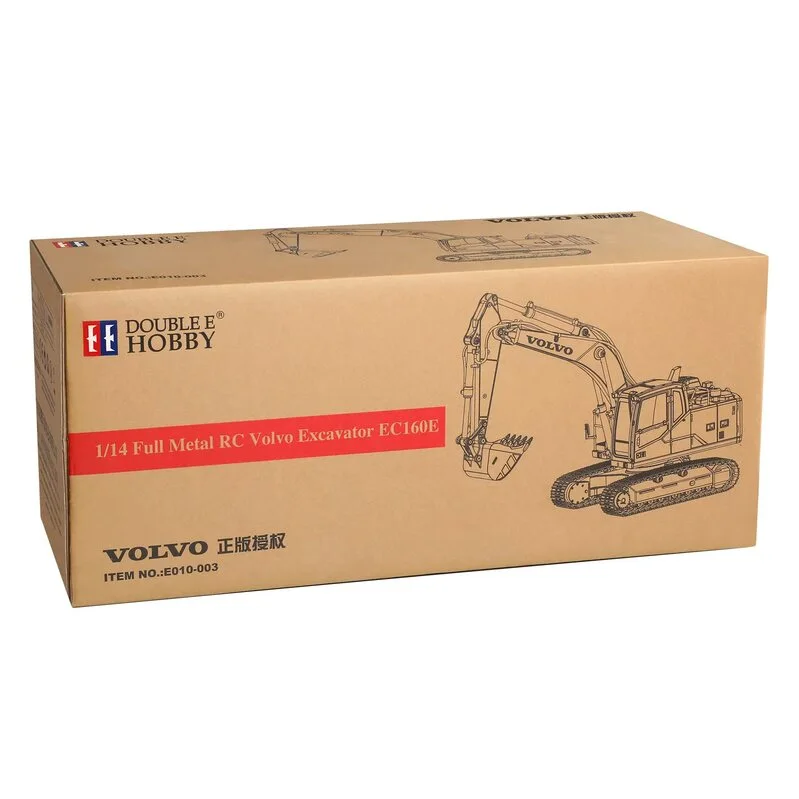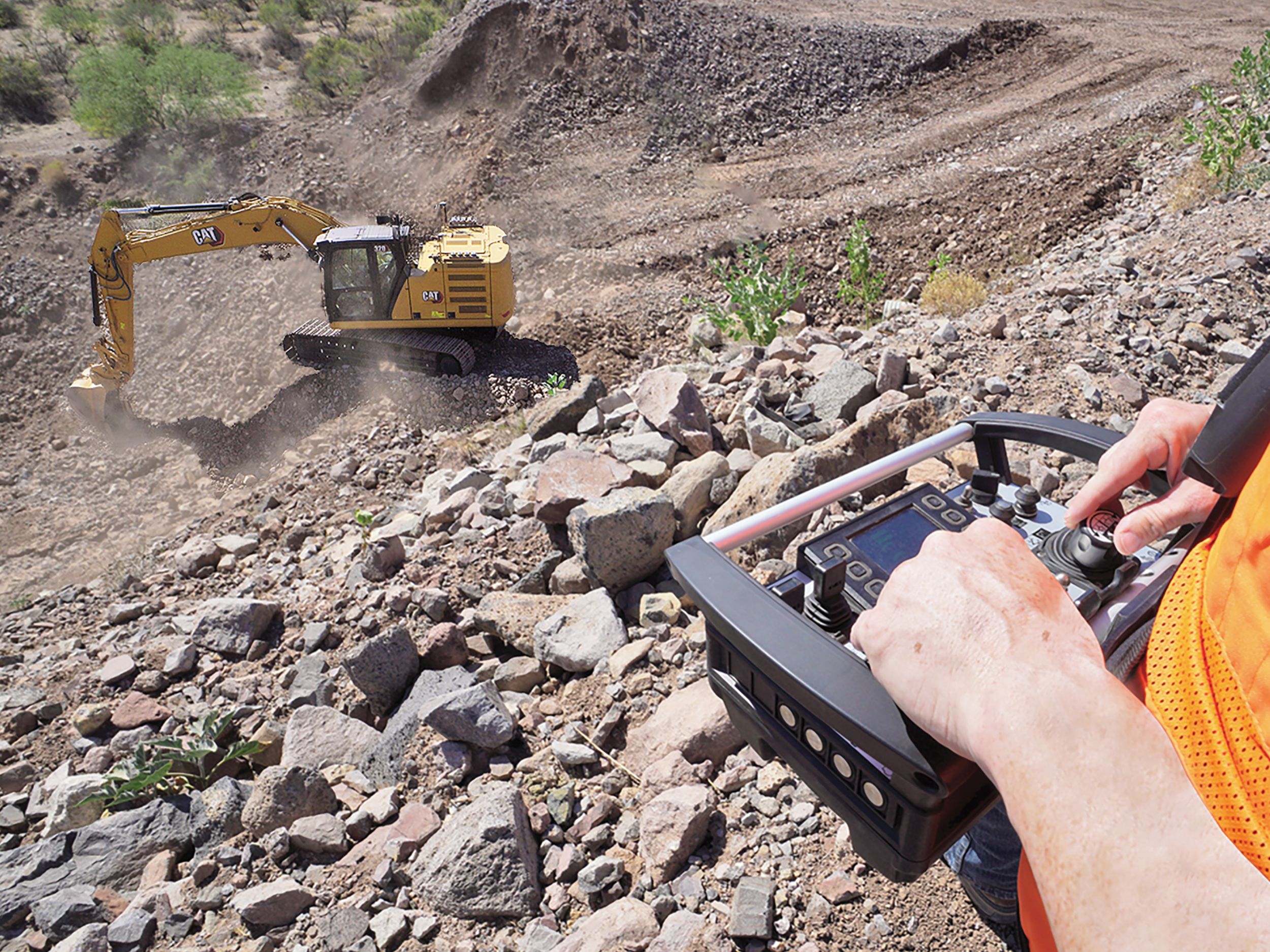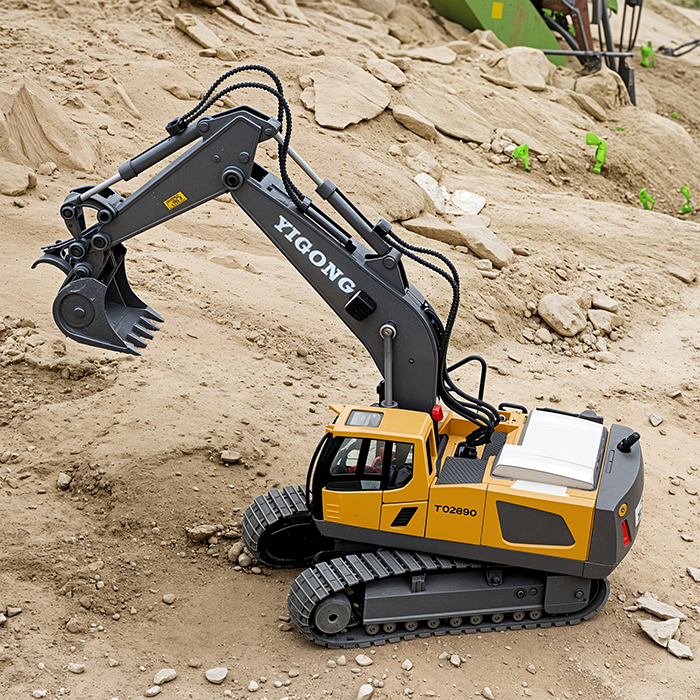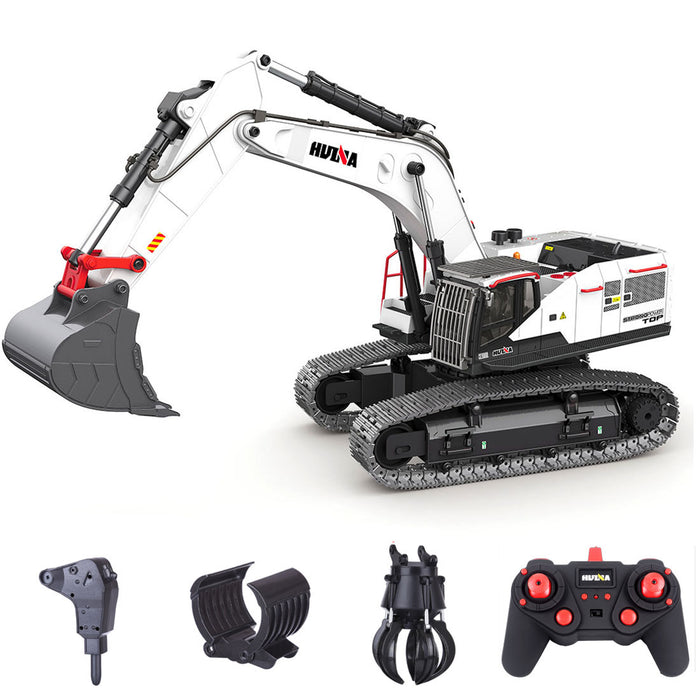The Vital Attributes of Excavator That Keep It a Must-Have Device
Excavators are essential in the construction and landscape design industries. Their flexible accessories enable for a series of jobs, from excavating to demolition. Furthermore, they boast superior digging depth and reach, powered by durable engines. Driver convenience and compact styles boost use in numerous atmospheres. What really sets excavators apart are their advanced hydraulic systems and durability. Comprehending these functions can clarify why they are considered essential tools on any kind of job site.
Functional Attachments for Improved Capability
Although excavators are effective machines by themselves, the addition of flexible attachments substantially enhances their functionality. These accessories change a standard excavator into a multi-purpose device, ideal for a selection of tasks. Pails, as an example, been available in various forms and dimensions, making it possible for drivers to dig, scoop, and relocate materials effectively. Hydraulic thumbs can be added for boosted gripping and handling of bulky things, such as logs or rocks.Furthermore, specialized add-ons like breakers and augers enable boring and demolition job, increasing the excavator's energy on building and construction sites. remote control excavator. Grapples are an additional option, ideal for moving and arranging particles. This adaptability not only increases productivity however additionally decreases the requirement for several machines, conserving time and prices. By outfitting excavators with the right add-ons, operators can tackle varied projects, making them indispensable in the building industry
Superior Digging Deepness and Reach
Excavators are created with superior excavating deepness and reach, permitting them to steer in tight areas and access hard-to-reach locations. This capacity is critical for numerous building and excavation jobs, where typical equipment may fall short. With adjustable boom arms and extendable tracks, excavators can quickly navigate uneven surface while keeping stability.The excavating depth can differ substantially among designs, frequently ranging from 10 to 25 feet, depending upon the style and purpose. This function enables operators to dig deep into structures, trenches, and other deep frameworks successfully. In addition, the reach of an excavator allows for precise excavating and product handling without rearranging the device frequently, saving time and labor costs.Ultimately, the exceptional excavating depth and reach of excavators make them crucial for specialists looking for to finish intricate jobs with accuracy and effectiveness. Their flexibility enhances performance on work sites, showcasing them as a crucial device in contemporary construction.
Powerful Engine Performance

When it concerns effectiveness and performance on building and construction sites, powerful engine efficiency plays an essential duty in the capacities of an excavator. A robust engine generates substantial horsepower, permitting the maker to take on sturdy jobs easily - remote control excavator. This stamina converts right into faster cycle times, enabling drivers to complete tasks a lot more quickly.Additionally, effective engines offer the essential torque to handle tough surfaces and varied tons, ensuring that the excavator can carry out efficiently under different conditions. Whether it is lifting, excavating, or relocating materials, the engine's performance directly affects the general functional effectiveness of the machine.Furthermore, improvements in engine innovation have caused enhanced gas efficiency, reducing operational prices while maintaining power result. Inevitably, the engine's efficiency works as the backbone of an excavator, affirming its standing as an indispensable tool in the building industry
Advanced Hydraulic Solutions

Enhanced Lifting Capacity
A significant improvement in lifting ability can be associated to innovative hydraulic systems located in modern excavators. These systems use high-pressure fluid to generate higher force, enabling drivers to lift heavier loads easily. The engineering behind these hydraulics guarantees peak efficiency, providing an outstanding power-to-weight ratio that enhances overall efficiency. Because of this, excavators can tackle demanding jobs, such as lifting big products or equipment, without compromising security. In addition, the durable style of hydraulic elements adds to enhanced longevity and dependability, making them appropriate for different construction atmospheres. This improved lifting capacity not just lowers the moment required for jobs yet also lessens the requirement for added equipment, showing necessary for both performance and cost-effectiveness in the building and construction industry.
Boosted Accuracy Control
Conventional excavators commonly had a hard time with precision, modern-day hydraulic systems have actually changed control devices, allowing operators to execute jobs with exceptional accuracy. These sophisticated systems utilize symmetrical control shutoffs that permit for smoother and extra receptive motions, substantially minimizing the margin for error. Operators can currently carefully tune the excavator's movements, making it less complicated to browse limited rooms and take care of fragile materials. Boosted feedback systems additionally notify operators of real-time efficiency, guaranteeing optimal coordination in between the maker and driver. This enhanced accuracy not just enhances performance however additionally boosts safety and security on task websites, reducing the threat of crashes. Therefore, modern-day excavators outfitted with sophisticated hydraulic systems are indispensable devices for building and excavation tasks requiring meticulous precision.
Operator Convenience and Exposure
Driver convenience and presence are essential parts in the style of modern-day excavators (remote control excavator). Functions such as ergonomic seat design, enhanced visibility alternatives, and effective control formats significantly improve the operator's experience and efficiency. Prioritizing these aspects guarantees that drivers can work efficiently and safely in different conditions
Ergonomic Seat Layout
Convenience and visibility are extremely important in excavator layout, with the ergonomic seat playing a vital duty in boosting the operator's experience. An ergonomic seat is crafted to sustain the operator's body, reducing exhaustion throughout long hours of operation. Flexible attributes, such as seat elevation, back-rest angle, and lumbar support, provide to individual preferences and advertise ideal stance. These modifications enhance comfort and allow the driver to maintain concentrate on tasks without discomfort. In addition, a well-designed seat can supply much better lateral assistance, permitting smoother maneuvering when the additional resources excavator functions. This thoughtful style not just improves performance yet additionally adds to overall safety, making sure that operators can perform their tasks efficiently and effectively.
Improved Exposure Features
The layout of an excavator prolongs beyond just the seat, with boosted visibility functions playing a considerable duty in operator convenience and overall safety and security. Big home windows and strategically located mirrors provide operators with a clear sight of their surroundings, reducing blind places. This layout consideration permits better spatial understanding, which is necessary in hectic work settings. Additionally, many excavators incorporate rearview video cameras and advanced tracking systems that aid drivers in maneuvering limited spaces. The combination of these exposure includes not just promotes safety and security however also lowers driver exhaustion by enabling much easier monitoring of workplace. Inevitably, enhanced presence contributes to a lot more effective procedures and aids ensure that excavators can perform their tasks successfully and securely.
Control Format Performance
While maneuvering complex work websites, an efficient control format considerably improves both driver convenience and exposure. A properly designed control setup warranties that operators can access essential features with very little effort, lowering fatigue throughout long hours. Ergonomic joystick placements and intuitive button plans permit smooth operation, allowing drivers to maintain concentrate on the task at hand. In addition, clear presence of both the workplace and the control panel is crucial for safety and precision. Modern excavators often incorporate flexible seating and control setups to suit numerous driver preferences, further enhancing convenience. Eventually, an attentively made control format not only enhances performance yet likewise fosters a more secure working setting by permitting drivers to respond promptly to altering problems.
Compact Style for Urban Environments
As metropolitan building and construction sites usually face room restraints, a compact layout becomes necessary for excavators running in these atmospheres. These machines are engineered to browse tight rooms, enabling for efficient maneuverability in jampacked work sites. A reduced impact enables them to function very closely to existing frameworks, lessening interruption and making best use of productivity.The compact layout commonly consists of shorter tracks and a tighter transforming span, assisting in operation in narrow alleys and constrained areas. Furthermore, light-weight review materials add to alleviate of transport, making it simpler to relocate the excavator from one location to one more within the urban landscape.Additionally, lots of compact excavators are equipped with attributes such as functional accessories and extendable arms, boosting their performance while keeping a small size. This adaptability enables operators to take on a variety of jobs, from digging to demolition, all while fitting effortlessly into the restrictions of city environments.

Sturdiness and Upkeep Considerations
Resilience stands as an essential factor in the performance and durability of excavators, especially sought after city atmospheres. These makers undergo extensive conditions, consisting of varying dirt types, severe temperature levels, and high-frequency use. Top notch materials and durable building are necessary for making sure that excavators can stand up to these difficulties without jeopardizing functionality.Regular maintenance is equally vital in preserving sturdiness. Set up assessments, prompt oil adjustments, and the replacement of used elements contribute considerably to an excavator's life-span. Operators should likewise take note of hydraulic systems, tracks, and undercarriages, as these why not try these out components usually birth the force of wear and tear.Investing in sturdy excavators with extensive maintenance plans improves integrity and decreases downtime, inevitably bring about raised efficiency on building and construction sites. Consequently, comprehending the interplay between toughness and upkeep is necessary for any individual taking into consideration the acquisition of an excavator for metropolitan tasks.
Often Asked Concerns
How Do Excavators Compare to Various Other Construction Equipment?
Excavators attract attention among building equipment because of their convenience, allowing tasks such as training, excavating, and grading. Compared to others, their hydraulic capacities provide better performance and power, making them crucial on different task sites.
What Security Features Are Included in Modern Excavators?
Modern excavators incorporate numerous safety and security functions, including rollover security systems, alarm systems, and progressed exposure improvements. These elements function together to lessen dangers, making sure operator safety and security while improving effectiveness on construction websites and various other demanding environments.

Can Excavators Be Made Use Of in Winter Conditions?
Excavators can indeed be utilized in winter season conditions, offered they are equipped with ideal winter season accessories and preventative measures are taken. Proper upkeep and changes enhance their efficiency, guaranteeing efficient procedure in spite of difficult weather condition conditions.
What Is the Typical Life Expectancy of an Excavator?
The typical lifespan of an excavator generally varies from 7,000 to 10,000 hours of procedure. This duration can significantly rely on upkeep techniques, operating problems, and the details design's resilience and style functions.
Exactly how Do I Pick the Right Excavator Size for My Task?
Picking the right excavator size entails examining task scope, site conditions, and material types. Consider elements like reach, depth demands, and weight capacity to guarantee maximum performance and safety during procedure. Size issues considerably in task success. Additionally, the reach of an excavator permits for accurate digging and material handling without repositioning the maker often, saving time and labor costs.Ultimately, the remarkable excavating deepness and reach of excavators make them essential for professionals seeking to complete intricate jobs with precision and efficiency. Convenience and presence are vital in excavator style, with the ergonomic seat playing a vital duty in boosting the operator's experience. The layout of an excavator extends past just the seat, with enhanced exposure features playing a significant role in operator comfort and overall safety and security. Modern excavators commonly integrate flexible seats and control settings to suit numerous driver preferences, further enhancing convenience. Lightweight products contribute to relieve of transport, making it easier to move the excavator from one area to another within the urban landscape.Additionally, numerous portable excavators are geared up with attributes such as extendable arms and functional attachments, enhancing their functionality while preserving a little dimension.